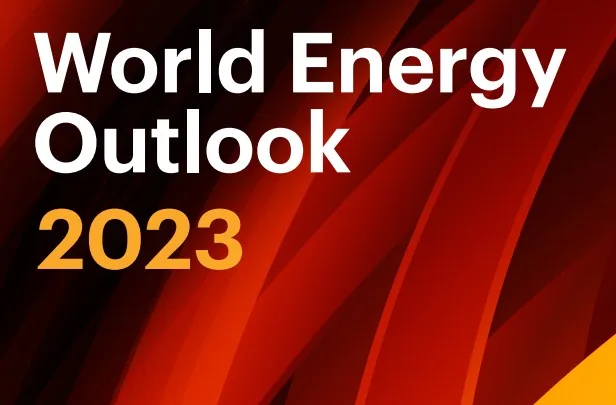World Energy Outlook 2023 Released by International Energy Agency (IEA)
The World Energy Outlook 2023 provides in-depth analysis and strategic insights into every aspect of the global energy system. Against a backdrop of geopolitical tensions and fragile energy markets, this year’s report explores how structural shifts in economies and in energy use are shifting the way that the world meets rising demand for energy.
It also examines what needs to happen at the COP28 climate conference in Dubai to keep the door open for the 1.5 °C goal.
The energy world remains fragile but has effective ways to improve energy security and tackle emissions
Some of the immediate pressures from the global energy crisis have eased, but energy markets, geopolitics, and the global economy are unsettled and the risk of further disruption is ever present.
The energy sector is also the primary cause of the polluted air that more than 90% of the world’s population is forced to breathe, linked to more than 6 million premature deaths a year.
Against this complex backdrop, the emergence of a new clean energy economy, led by solar PV and electric vehicles (EVs), provides hope for the way forward.
Electric car sales in the Stated Policies Scenario, 2015-2030
Solar PV capacity additions in the Stated Policies Scenario, 2015-2030
We are on track to see all fossil fuels peak before 2030
A legacy of the global energy crisis may be to usher in the beginning of the end of the fossil fuel era: the momentum behind clean energy transitions is now sufficient for global demand for coal, oil and natural gas to all reach a high point before 2030 in the STEPS
The share of coal, oil and natural gas in global energy supply – stuck for decades around 80% – starts to edge downwards and reaches 73% in the STEPS by 2030.
Coal demand by region in the Stated Policies Scenario, 2000-2050
Policies supporting clean energy are delivering as the projected pace of change picks up in key markets around the world.
- Thanks largely to the Inflation Reduction Act in the United States, we now project that 50% of new US car registrations will be electric in 2030 in the STEPS
Although demand for fossil fuels has been strong in recent years, there are signs of a change in direction.
- Sales of cars and two/three-wheel vehicles with internal combustion engines are well below where they were before the Covid-19 pandemic
New dynamics for investment are taking shape
The end of the growth era for fossil fuels does not mean an end to fossil fuel investment, but it undercuts the rationale for any increase in spending.
Annual investment in fossil fuels and clean energy, 2015-2023
Simply cutting spending on oil and gas will not get the world on track for the NZE Scenario; the key to an orderly transition is to scale up investment in all aspects of a clean energy system.
Meeting development needs in a sustainable way is key to moving faster
- The global peaks in demand for each of the three fossil fuels mask important differences across economies at different stages of development.
- Clean electrification, improvements in efficiency and a switch to lower- and zero-carbon fuels are key levers available to emerging and developing economies to reach their national energy and climate targets.
Ample global manufacturing capacity offers considerable upside for solar PV
- Renewables are set to contribute 80% of new power capacity to 2030 in the STEPS, with solar PV alone accounting for more than half.
- Using 70% of anticipated solar PV manufacturing capacity would bring deployment to the levels projected in the NZE Scenario; effectively integrated, this would further cut fossil fuel use – first and foremost coal.
Affordability and resilience are watchwords for the future
- A tense situation in the Middle East is a reminder of hazards in oil markets a year after Russia cut gas supplies to Europe.
- The global energy crisis was not a clean energy crisis, but it has focused attention on the importance of ensuring rapid, people-centred and orderly transitions.
- Diversification and innovation are the best strategies to manage supply chain dependencies for clean energy technologies and critical minerals.
We need to go much further and faster, but a fragmented world will not rise to meet our climate and energy security challenges
- Proven policies and technologies are available to align energy security and sustainability goals, speed up the pace of change this decade and keep the door to 1.5 °C open.
- No country is an energy island, and no country is insulated from the risks of climate change. The necessity of collaboration has never been higher.
- Fifty years on from the first oil shock, the world has lasting solutions to address energy insecurity that can also help tackle the climate crisis.
India specific observations
- India has now become an importer of modern clean energy technologies as it scales up solar and wind power generation capacity.
- Over the past five years, solar PV has accounted for nearly 60% of new generation capacity.
- India’s demand for electricity for running household air-conditioners is estimated to expand nine-fold by 2050.
Suggestions:
- Need to Scale up clean energy investment in emerging and developing economies.
- Expanded, modernised and cyber-secure transmission and distribution grids are critical to electricity security.
- Pay attention to the resilience of clean energy technology supply chains.

